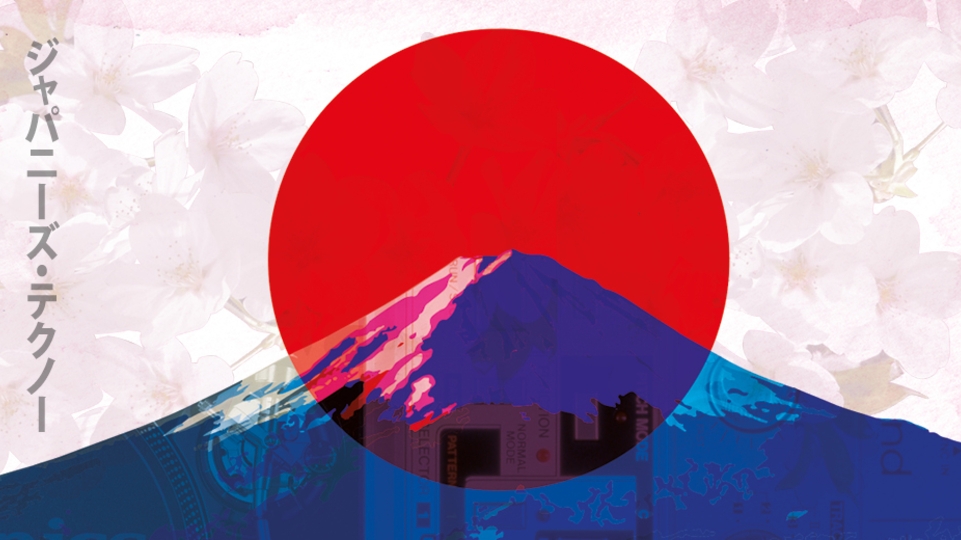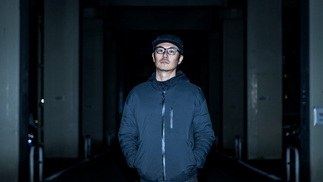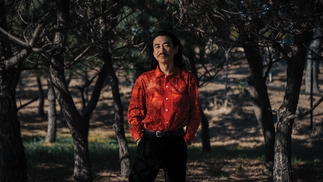Meet the artists shaping Japan’s vital techno underground

Japan is producing some of the world’s most vital techno, though its roots go way back to the late 1970s. We talk to some of the country’s producers, DJs and musical advocates to find out what makes the Japanese underground so exciting...
Since the end of World War II, Western culture has loomed large over everyday life in Japan. The decades since have brought about a wide variety of American influenced subcultures, from Rockabilly gangs to biker tribes. Fashion designers have gone to great lengths to import American looms to recreate famous US denim. Distillers have done their best to perfect bourbon whiskey, city streets are lined with fast food restaurants and chain stores, and techno has long been the late night soundtrack of cities across the nation. Rather than simply copying what it hears, though, Japanese culture — in a wide range of pursuits — focuses on absolute mastery of a form, and so it is that in 2018 the country is turning out some of the most exciting talents in electronic music.
Techno would never have been possible without Japan’s advanced electronics industry. Without the Roland TR-303, there’d be no acid. Had Tadao Kikumoto not designed the TR-909 drum machine, Jeff Mills would never have become a master of mind-melting drum patterns. Even before then, hip-hop (and later house and techno) might never have taken off in the way it did without the reliability of the famously sturdy, high torque motor system that was in the first Technics 1210s, which made DJing on two decks possible. Forty-five years later, these bits of hardware, as well as Yamaha keyboards, Korg synths and many more tools of the trade are all still the industry standards.
ORIGINATORS / ELEVATORS
Until the internet came along, Japan was a country isolated by its geography. It was off the West’s radar and a world unto itself. To this day, many DJs we speak to say it is one of the few places they play that feels truly different from the other endlessly homogenised countries they see around the world. Maybe for that reason, it hasn’t been written into the history of dance music as often as Chicago, Detroit, Berlin or London. But it should.
“Folk rock? Modal jazz? Funk? Disco? New wave? Hip-hop? House? You name it, Japan had a scene for every single musical current of the second half of the 20th Century,” says Jazzy Couscous boss Alixkun. He’s a Frenchman who lives in Tokyo, and in 2015 put out the essential and well-received ‘Once Upon A Time In Japan’ compilation, which shone an overdue light on the early Japanese house scene. “But rather than copying [those musical currents],” he continues, “Japanese artists would bring their own personal twist and flavours to their composition, and come up with something unique, a mix of western and eastern influences.”
 DJ Nobu
DJ Nobu
Before house music, though, there was techno. As soon as the late ’70s, soon-to-be Yellow Magic Orchestra members Haruomi Hosono, Ryuichi Sakamoto and Yukihiro Takahashi were already experimenting with electronic sounds, thanks to early access to Japan’s newly arrived music making machines. They mixed lounge exotica with Kraftwerk style keys, robotic rhythms and the edgy, futuristic style that defines techno, and in the process became unwitting godfathers of the Japanese scene. In 1979 they released their hit album ‘Solid State Survivor’ but, after a disappointing follow-up, the band went their separate ways.
Taking on the mantle were Denki Groove, a goofy group of fusionists who initially mixed up techno with pop and wore funny clothes. But as time went on, they got more serious and started to take cues from the UK rave scene that was emerging in the early ’90s. By 1998, band member Fumitoshi ‘Takkyu’ Ishino went solo and put out his pivotal ‘Berlin Trax’ album, which was filled with German-style hard techno and solidified his reputation as a serious producer. A year later, he went on to set up Wire festival, which brought the best techno DJs from around the world to Japan and helped foment a proper scene.
Once electronic music caught on throughout the ’90s, various other producers began to emerge. Ken Ishii was one who was initially making obscure ambient techno for Belgium’s R&S label as Flare, then put out ‘Jelly Tones’, a self-professed stab at taking techno-derived music to a mass audience. It utterly succeeded, and made him one of Japan’s most in-demand DJs.
Other now well-known names from the early days are, of course, Satoshi Tomiie, who moved to New York to get to the heart of the house scene. His impact cannot be overstated, having cooked up the enduring 1989 classic ‘Tears’ with Franke Knuckles and Robert Owens, before going on to play keys with Ryuichi Sakamoto. Elsewhere, Fumiya Tanaka is considered to be one of the kings of modern minimal, having made his mark since the mid-’90s, and Soichi Terada was also one of Japanese house music’s most vital early figures. The Far East label boss is known not only for a huge smile, but for his brilliantly happy and melodic house, which was exposed to the world by Hunee, who compiled the best of it on the excellent ‘Sounds Of The Far East’ compilation for Rush Hour a few years ago.

Emika Elena
Arguably in light of that compilation, attention has turned to Japan in earnest. As a result, Bitta label boss and Future Terror party promoter DJ Nobu has gone from being one of Tokyo’s local heroes to now being well established on the global circuit and a regular at festivals such as Dekmantel. “His rapid advance overseas has taught me that we Japanese can play a bigger role in the world,“ says new school artist Masafumi Take, who runs exciting new label Katharsis Recordings out of his native Tokyo and put out his first production just last year.
Able to play house, experimental, ambient and techno, Nobu’s brand of music feels somehow very Japanese. It comes, as Take puts it, “with great delicacy, [and] much focus on the details of mixing, the opposite of the Berlin style,” and with intricate ambience laced into the mind-melting hypnotic grooves. It feels automated and futuristic, yet impossibly stylish and profound. It prises subtle moods and deceptively simplistic design over grand dramatic effect, as is often the way with anything Japanese, from their approach to art to design to fashion.
Wata Igarashi also fits into this category. He is a computer game sound designer by day, and the influence of computer game, anime and film soundtracks, of course, cannot be overlooked when discussing the aesthetics that make Japanese music so unique. Releasing on deep techno labels like The Bunker New York, Time To Express and Semantica, he has a distinctly psychedelic and trippy style that is perfectly polished and really takes you into a fantastically realised and beautiful sound world.
THE POLITICS OF DANCING
Despite all this, in 2018 electronic music in Japan very much lives in the underground, according to both Alixkun and Emika Elena, a newly emerging talent who runs the Human Lessons label. It focuses more on darker sounds, brooding grooves and bleak ambience, inspired by growing up with “horror movies and creepy stuff”, but she also agrees that, generally, the one unifying style of Japanese music is its “delicate” nature.
“It’s not super popular among young people,” she says. “People who like techno here are really techno nerds. Even non-DJ people know many good artists and labels. It seems they purely love techno.” Alixkun adds, “It’s a very niche scene that revolves around an ecosystem of two or three major clubs and a bunch of smaller venues, allowing young local DJs to make their debuts without the pressure of having to play in a big club.”
 Masafumi
Masafumi
Ryogo Yamamori is one of Japan’s more famous techno exports, having released on the likes of Ovum. He thinks Ko Kimura contributed most to the Japanese club scene with his sets at the celebrated Yellow club, while Ko-san’s Ministry Of Sound show on J-Wave Radio introduced the youth to: “the roots of house music and how to mix properly”.
He remembers when he started in the ’90s that the club scene in Japan was hugely influenced by the Summer of Love. “Two hundred people would be in line outside the clubs even before opening,” he says. “But since 2000, the club scene in Tokyo has gradually entered a period of stagnation. There’s a feeling the bubble burst. The young generation is growing up with EDM, but slowly they are getting bored of the same sounds, so techno is just right for them when searching for the next music.” Sapphire Slows says the scene is, “small but available” and that the people involved have “pure enthusiasm and love for the sound and quality parties”. Masafumi Take also agrees the club scene has become smaller and smaller, and that techno is a very niche music in Japan. “Local scenes are the last surviving ones,” he rues.
“Tokyo’s techno party is nearly half Western tourists and it will only get worse as the local customers get married, have children and eventually stop coming.” There are a few reasons for the apparent stagnation when, globally, dance music is enjoying its moment in the headlines. Larger clubs take fewer risks, which is partly because of the country’s ageing population, but also partly a result of people’s priorities changing after the 2011 earthquake and tsunami disaster. Contrary to that, the days following that tragic natural disaster actually saw the now well-respected Sapphire Slows give up a career in journalism to dive headfirst into music.
“After the earthquake, all the news and press around it changed my view of Japanese journalism. But more than that, I thought, ‘if I die tomorrow, what do I want to have done?’ so I started making music.”
Another reason the local scene has struggled is the infamous fueiho law, which was brought to Western attention by DJ Sprinkles. The essential deep house artist lives in Japan, so has experienced the scene first hand and, in 2013, put out her response to the archaic laws in the form of her essential ‘Where Dancefloors Stand Still’ compilation on Mule Musiq. The law places restrictions on people dancing in nightclubs and sees a 1:00am curfew regularly enforced across the country. It is legislation that is actually a remnant of antiprostitution fuzoku laws dating back to 1948, but at the time was being implemented with extra zeal after the death of a student outside a club in 2010. Recently, though, the laws have been relaxed.
 Wata Igarashi
Wata Igarashi
“Eventually, Tokyo club players came together to make it stop, and allow a rebirth of [the] Tokyo club scene,” explains Alixkun. “What’s missing for a real explosion of the scene though, compared to Europe for instance, is a strong local producer’s scene. There aren’t enough heroes they can look up to and identify with.”
Masafumi Take says the laws still: “deprive a small scene of places young DJs who are coming up can play at”. Sapphire Slows adds that the newly relaxed laws have improved the situation for commercial clubs (as they were the ones affected by the laws, which only applied to those over a certain size), “but the situation for the small bars and venues is still not good at all”.
She is also keen to point out that although there is more focus on Asian artists now, it is often with certain fetishist overtones. “I want to believe that in 2018 all talented people should be recognised to make their own success without mention or too much emphasis on their identity. But to be honest, the world hasn’t reached that point yet. I still see some events and press in the music industry contain some kind of ‘Orientalism’ [defined in a book by Edward Said as the West’s patronising representations of the East].
“Also, it’s good and important to encourage and motivate people who want to represent you, but today’s state is still far from striking a balance,” she continues. “For example, if Nina Kraviz and The Black Madonna are taking 80% of big bookings, it doesn’t help other DJs much, even if they have the same talents and skills.
An Asian example is Peggy Gou: if you get lots of benefits and attention from the movement and just stay silent, you are just as much part of the unbalance. I think we who never got the attention in the past can all benefit now if these stars share their success with other femme, non-binary, marginalised artists by fighting for them.”
PROGRESSION
Although a forward-looking nation in areas such as design and technology, Japan doesn’t necessarily embrace the inclusive roots of dance music like it could. Sapphire Slows says LGBTQ+ rights are discussed a little more than they used to be, but still not on the same level as in other countries around the world. “I’d say a few conservative people and those from the older generation finally started considering it, but there are still lots of weird, uncomfortable things for LGBTQ+ people in Japan. Generally, I think the problems are at least coming out now from the hidden dark places, and I’m much more hopeful for younger generations.” She describes her own music as, “Casio techno, ghostly ambient, weird pop” and it comes on labels such as 100% Silk and Big Love Records after she was initially into her dad’s prog rock. A move to Tokyo aged 18 changed that, and trips to nights including Warp’s 20th anniversary party, and having a “first psychedelic experience” seeing [krautrock pioneer] Klaus Schulze in concert in 2010 “completely knocked me down”. Now aged 28, she did her first tour of the US aged 22 and has guitar and bass playing skills that feed into her music making. She’s been quiet for a while on that front after taking a break from 2013-2016 for personal reasons.
“At the same time, I was DJing a lot in Tokyo, and was trying to improve my production skills and synthesiser knowledge in my bedroom,” she explains. “I generally try not to push myself too much when I’m not ready for it. My idea is not to dedicate or sacrifice my life for music, I’d rather keep and grow music as an important part of my entire life.”
She says the most important part of her aquatic, dreamy, organic output is the texture, while agreeing that a lot of Japanese music is, “almost mechanically well-produced, with a quiet intensity”. Her own sound is melancholic and introspective but not dark, and is made on anything that works, be it software or hardware. “I’m not educated for musical production so first I started with really simple sequences, programs, presets and some toy-ish instruments,” she explains. After “thousands of hours” sitting down and experimenting, she is now more comfortable with a range of gear, and has recently bought a Buchla synth, “which is kind of a big turning point,” because its sound is “just so pure”.
 Ryogo Yamaori
Ryogo Yamaori
BACK TO THE FUTURE
Like any well-developed musical landscape, Japan has a rich history of sounds, scene and styles to explore. Following on from his vital house compilation, Alixkun is doing just that again on ‘Kumo No Muko: A Journey Into 80s Japan’s Ambient And Synth Pop Sound’ — a collection of 12 absorbing tracks on his Jazzy Couscous label. They have all been found on record digging trips over the years at places such as FACE Records, ELLA Records, Coconuts Disks in Ekoda, HMVs and DISK UNIONs.
“I think what’s common to each track is the deep and moody vibe that comes from them,” says Alix. “I really wanted to honour this kind of music, as it felt that so far mostly city pop and funky, boogie stuff had been focused on when it comes to Japanese music. It felt like there was an untold story, an entire side of Japanese music that was still in the dark and that needed to be excavated.”
Interest in Japanese ambient music has been renewed in recent years, not least in part thanks to the revival of vinyl culture, as well as the power of the internet. YouTube algorithms have been responsible for bringing to the fore previously hard to find, super expensive albums by Midori Takada, whose Brian Eno- and Steve Reich-influenced 1983 ambient masterpiece ‘Through The Looking Glass’ has recently been reissued. It’s a four-track suite of evocative dreamscapes that draws on music from all over the world and was made from marimbas, gongs, chimes, recorders, a reed organ and Coca-Cola bottles blown into and played like flutes.
REMOTE
Alixkun originally moved to Japan for work, but still remembers the shock of his first clubbing experience. “The partying experience here is definitely something. Crowds are really dedicated, cheer at the DJ throughout the set and there are no drugs, not an ounce of aggression. People are really focused on the music and dancing to it until the morning comes, and even beyond.
“Releasing music is a different story though,“ he laments. “Unfortunately Japan is a remote country, and it’s very costly to send physical music from Japan to the rest of the world. On top of that, the only working pressing plant, until recently, is incredibly expensive, and most of the Japanese labels press their records in Europe now. Living here, you have access to hidden treasures in terms of musical discovery, but it’s very hard to get it out there.”
 Sapphire Slows
Sapphire Slows
After shouting out “QPchan, Dubby, Pianola” and many others for “their dedication and inspiration, which keep the record digging scene so lively”, he says that Japanese clubs have, “some of the best soundsystems on earth”. Yamamori, agrees, but adds that, “it is not possible to demonstrate to the utmost, because noise complaints come from neighbouring people”. In the UK, we are both familiar with noise complaints from neighbours, but also the fact that Japan has incredible soundsystems, with Japanese festival Labyrinth long since talked about in hushed tones because of its focus on superb sound. Recently, we have started to copy the Eastern trend for audiophile listening bars, where a space is decked out with plush design and a super high-end, impossibly expensive soundsystem. Brilliant Corners and Spiritland are two such examples in London that are leading the way, and now the soundsystems at clubs and festivals around the country are often talked about with as much importance as the DJs themselves.
Alex says that Japan is kind of similar to his native France in that, “we always need external ears to validate some of our musical productions before we start recognising them as well”, and adds that the interest from the West has sparked a city pop revival in recent years. “The local youth is more and more looking up to past heroes like Yoshida Minako or Yamashita Tatsuro. Companies like HMV understand and got themselves busy with reissues of very rare Japanese music gems.”
As Emika puts it, “techno is popular but not widely enough. You could say it’s still niche.” She has recently decided to only release her own music on her label, and says she feels she will head in deeper directions in future. Katharsis boss Take, meanwhile, continues to put on his “challenging” parties, “because we are looking for musicality that we cannot do without ourselves”.
His label of the same name has put out just two EPs featuring himself, Yamamoto, Kannabi and O-Ma, but is already essential for fans of ambient-laced, deeply psychedelic techno. It will only deal in music from Japanese artists, and was started as a way of Take: “offering something new”. As long as all these artists continue to push on, inspire others around them and win fans around the world, the small but well-formed scene will continue to thrive.
ESSENTIAL LISTENING
On top of the key releases already discussed, here are a few EPs and LPs old and new that offer an overview of all that is great about Japanese electronic music...
Sapphire Slows
‘The Rule Of Purity’ EP on Nous (2017)
Brain soothing experiments in synthetic ambient sound.
Emika Elena & Ryogo Yamamori
‘Confusion On Human Lessons’ EP (2017)
High pressure warehouse techno with real grit and menace.
Masafumi Take, O-Ma, Kannabi, Ryogo Yamamori
‘II’ EP on Katharsis Recordings (2018)
Kaleidoscopic and cavernous deep techno with hi-fidelity details that take you on a trip.
Wata Igarashi
‘Niskala’ EP on Midgar (2018)’
Dark but beautiful techno with elongated grooves and meandering synths that take you down the rabbit hole.
Ebi
‘Zen’ on Space Teddy (1994)
Slow burning, superabsorbing album of chilled out acid techno.
So Inagawa
‘Integritithm’ on Cabaret Recordings (2015)
The Cabaret label boss is a favourite with minimal house heads, and for good reason: few make grooves as slick and seductive as he.






